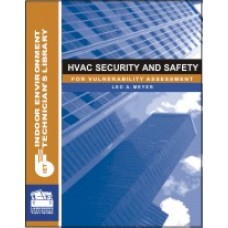Improvements underway include construction of a fifth runway, an additional concourse, and a four-gate expansion of concourse E, which handles international operations. Overall infrastructure upgrades to the Central Passenger Terminal Complex (CPTC) included HVAC equipment, drives, and control systems to increase system performance, enhanced compliance with IAQ standards, and decreasing maintenance and energy costs. "Although those improvements are important to overall passenger and airport employee comfort, as well as energy savings, the ventilation upgrades to the APM are a life-safety measure," explained Bill Borie, president of Borie Davis (Atlanta), the HVAC equipment representative that handled the APM project.
An integral part of the 10-year, $5.4 billion project included upgrading the ventilation system of the Automated People Mover (APM). A three-story underground substructure houses the APM and its maintenance facility and connects all concourses with the terminal. It includes nine four-car trains operating on a 3.5-mile loop track, transporting approximately 128,000 passengers per hour, carrying them from concourses to the baggage claim and ticketing area.
"Upgrading the APM's ventilation system was necessary to meet National Fire Protection Association standards for emergency smoke evacuation," Borie emphasized. The APM ventilation system was retrofitted with four 6-ft-dia. 125-hp reversible vane-axial fans capable of venting/exhausting the tunnel at 120,000 cfm. The fans, manufactured by Twin City Fan and Blower, are specially designed for smoke control applications and are tested to operate for one hour at 500ºF. Fan speed is controlled by four 125-hp ABB ACH Series drives.

Ramping Up In An Emergency
The ACH Series drives adjust to fluctuating load conditions, speeding up or slowing down fans when the load increases or decreases, keeping airflow balanced. In a fire or smoke situation, the fans ramp up to full speed. Without these drives, the fans would need to run at the emergency ventilation flow rate at all times (constant speed operation), to ensure smoke extraction capability, which would mean higher operating cost and more energy consumption.W.B. Wallis& Co. was awarded the $3.4 million contract for mechanical and electrical equipment, including the set up and installation of dampers, sound attenuators, programmable logic controllers, 56,000 feet of fiber optic cable, the fans, and the drives. Sam Green, the firm's vice president and project manager, said that the ABB drives were specified because they were deemed best for this life-safety system installation.
The ABB ACH Series drive interfaces with two Johnson Controls DX-9100 series extended digital controllers, which communicate tunnel conditions that determine fan speed. A digital controller and back-up controller are located at each of the two tunnel entrances, to monitor temperature and detect fire/smoke. The controllers communicate with each other and the fan drives via fiber optic cable installed in an adjacent utility tunnel.
Distortion Elimination
Because the drives were installed in a voltage-sensitive facility, the issue of harmonic distortion also had to be addressed. Harmonic distortion may result in misoperation of sensitive electronic equipment and is especially important to minimize in areas where there is a heavy use of voltage-sensitive electronic devices - such as in airports where RF communications, computer terminals, and airport tower equipment is in constant use.Green explained that ABB's 18-pulse design eliminates any potential harmonic distortion. Using the 18-pulse design provides a much cleaner electrical system, as well as getting the benefit of controlling the air volume necessary to satisfy the application.
The fans' full-speed operation is critical during a fire or smoke situation, and to ensure the fans do not shut down, the drive is equipped with a standard fireman's override. With the fireman's override activated, the drive will run the ventilation/extraction at full speed, ignoring any alarms or other commands.
The tunnel smoke-removal modification project was completed within a 330-day time frame and has been running without problems since January 2004. All parties involved with this installation met their schedules, and W.B. Wallis as the general contractor received a letter of commendation from the City of Atlanta Department of Aviation for keeping to the timeline. ES



